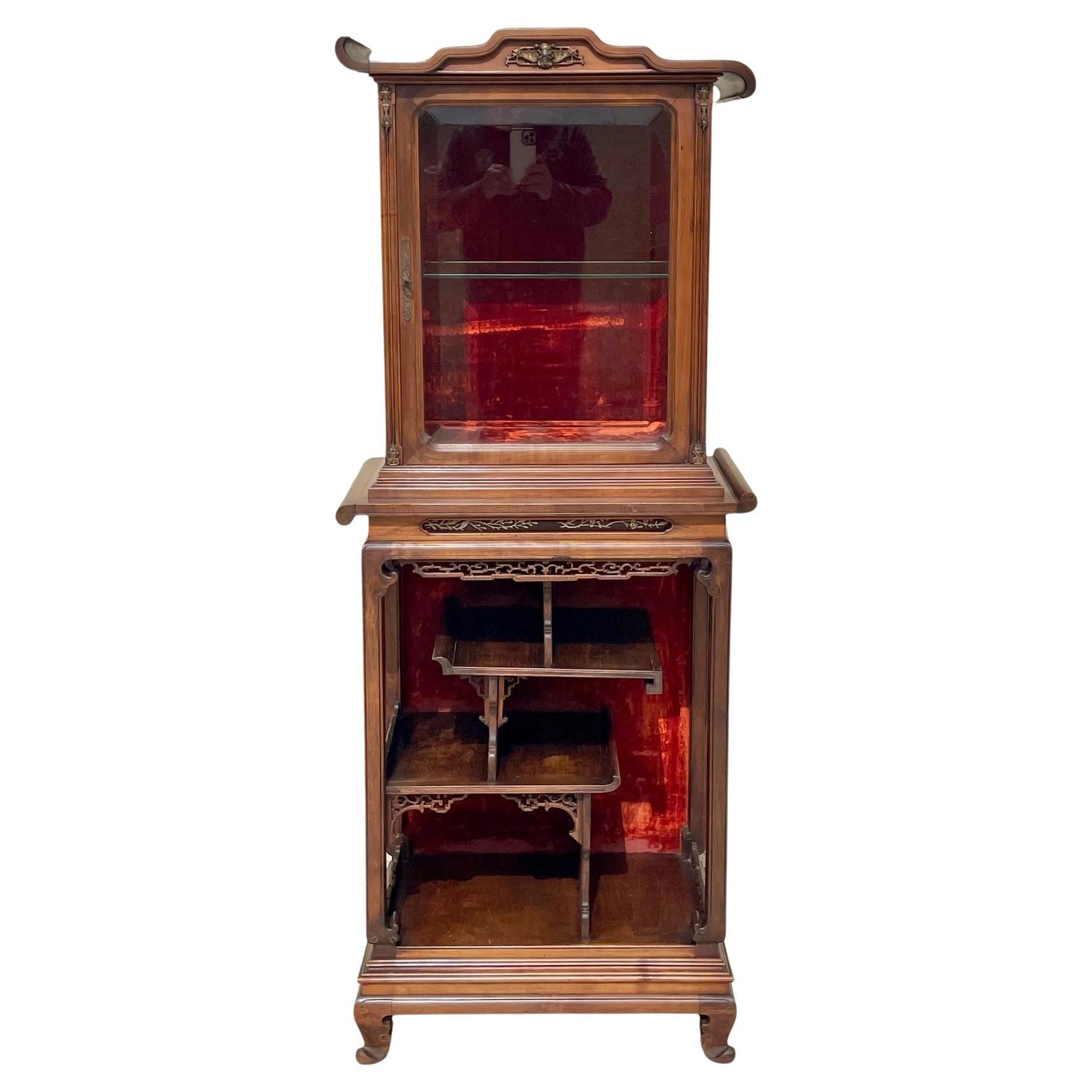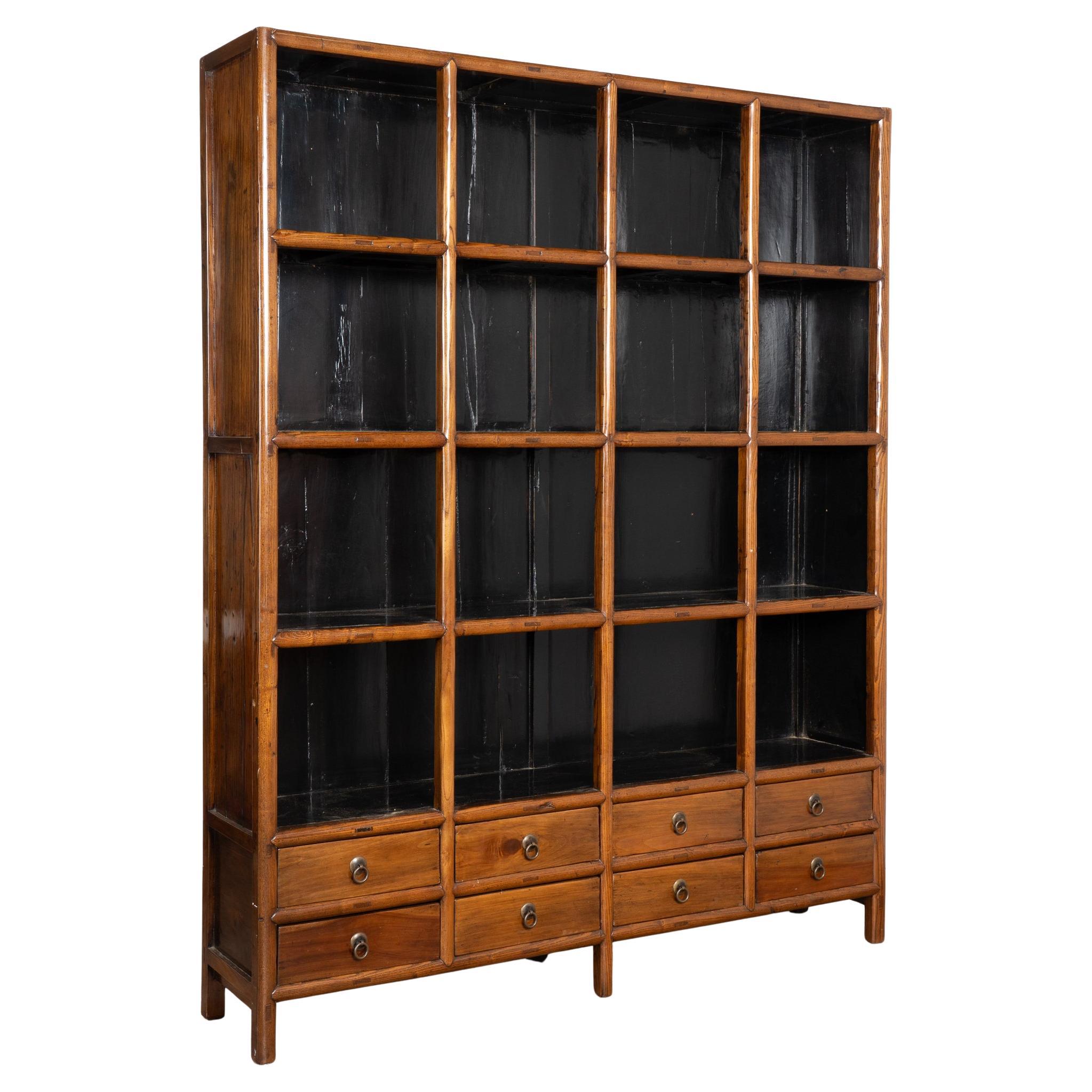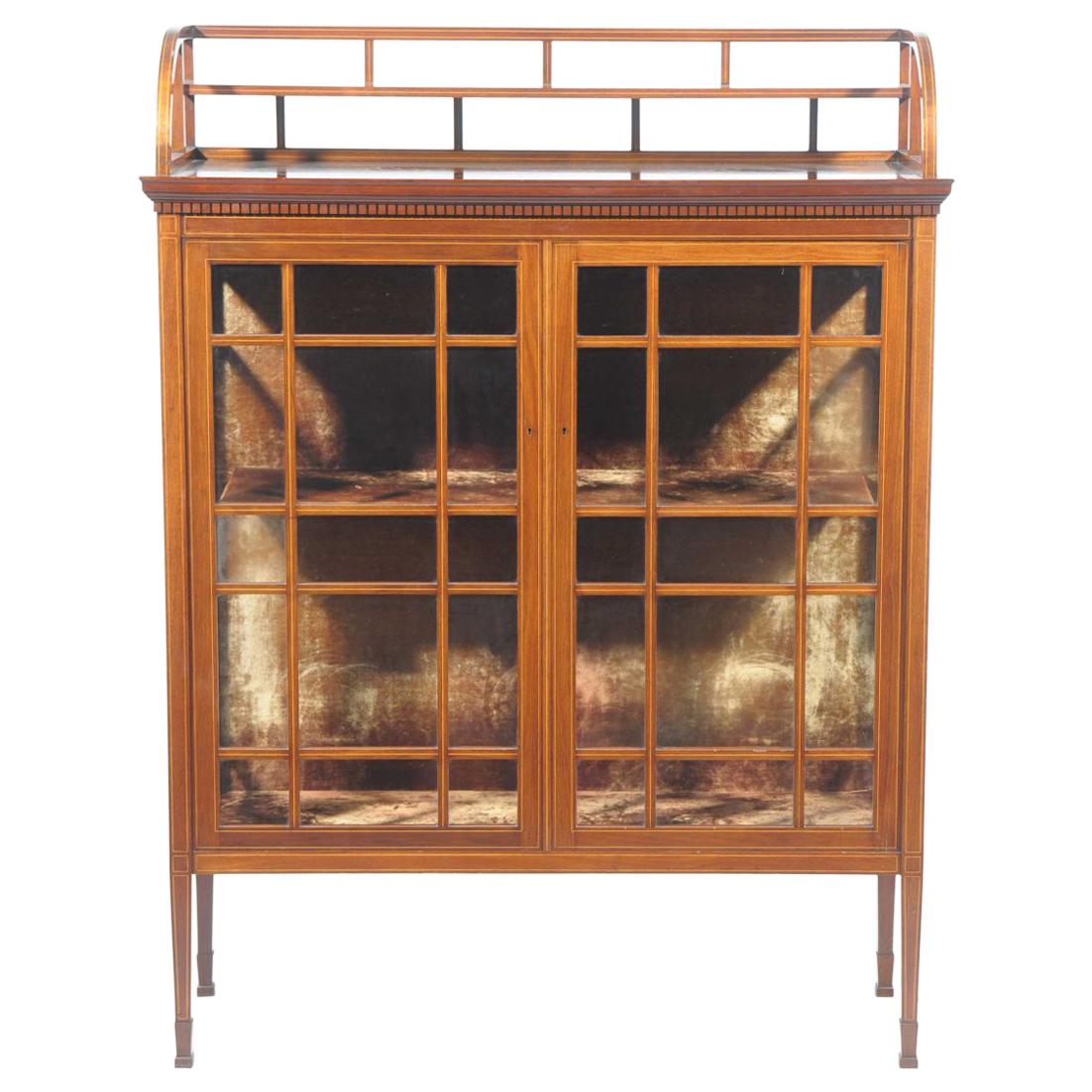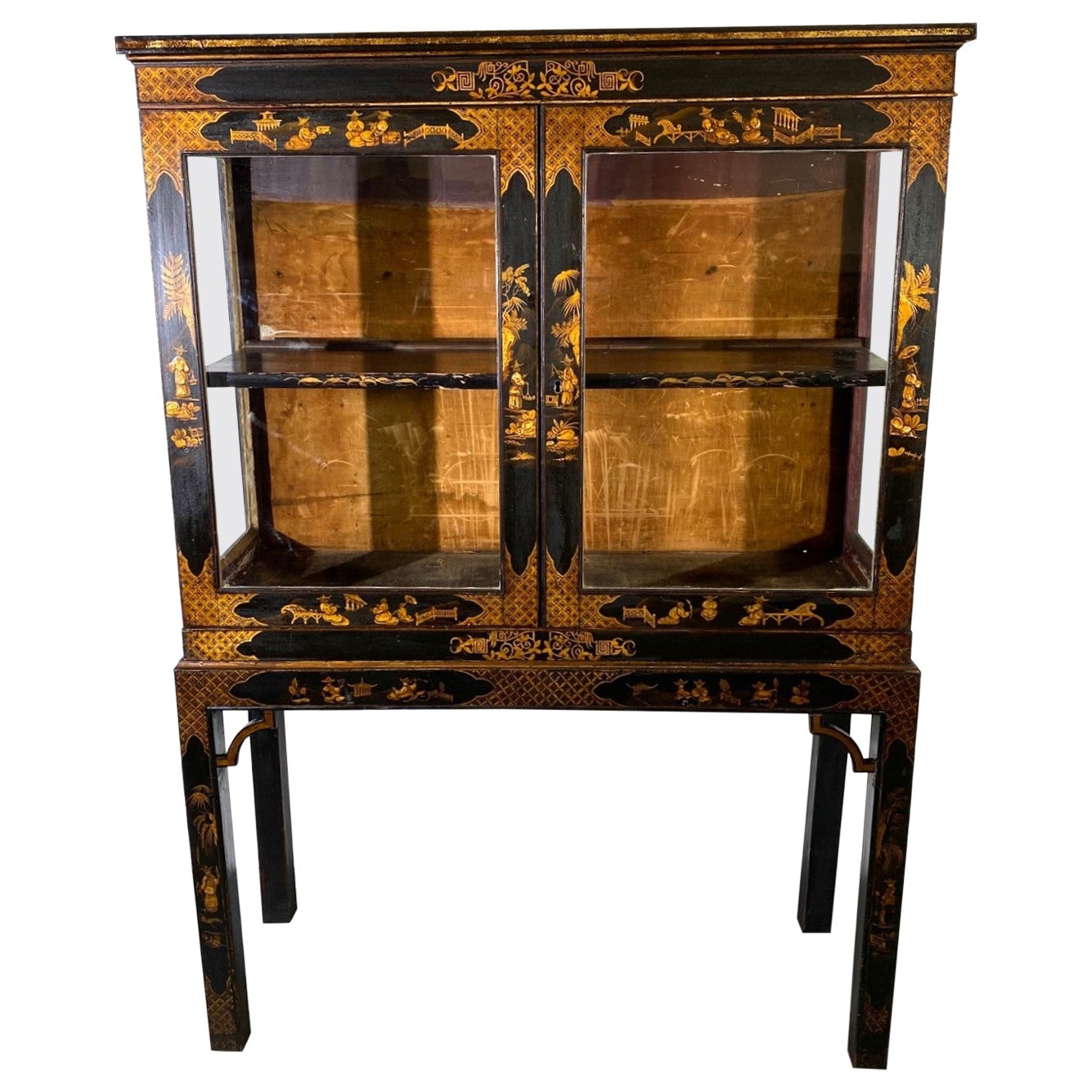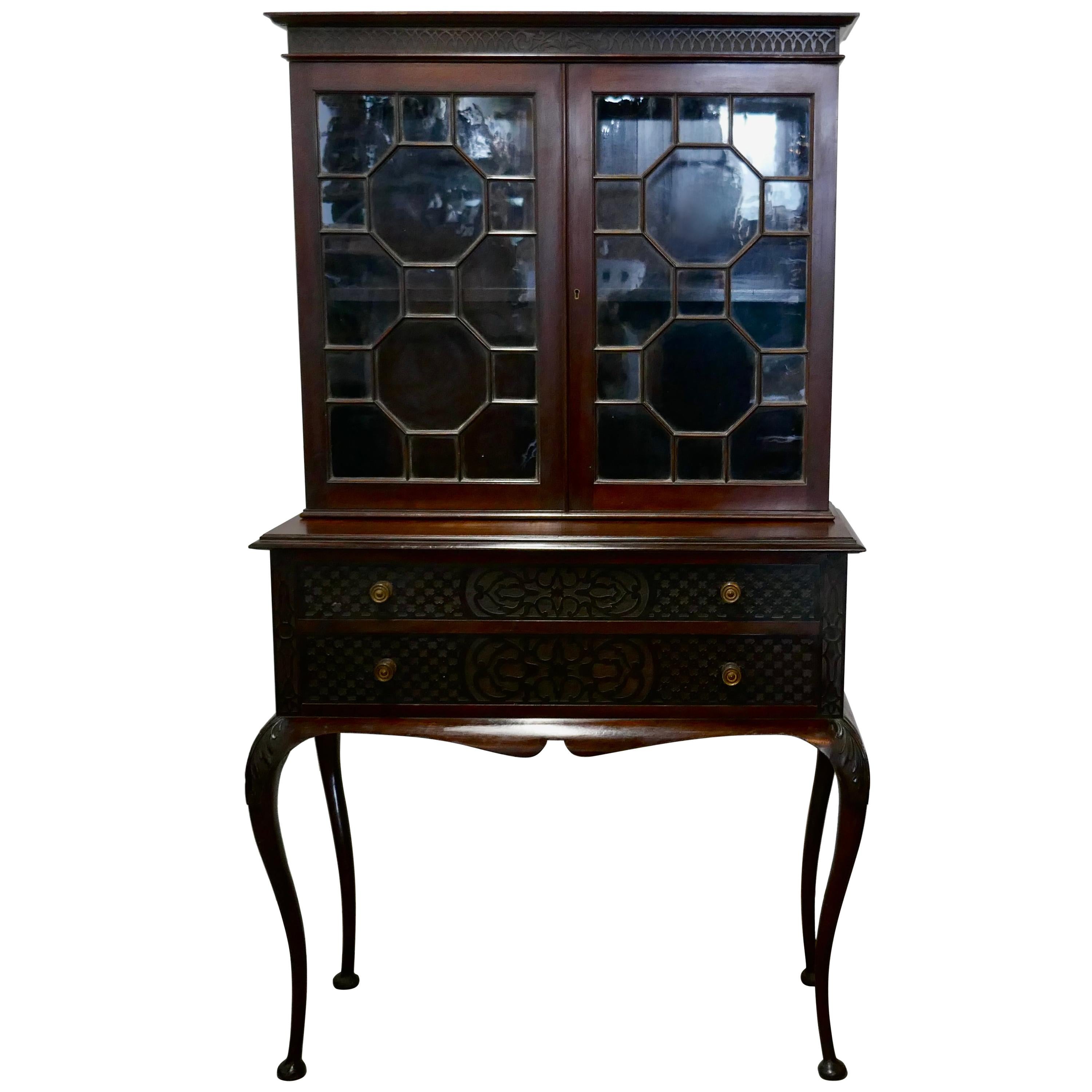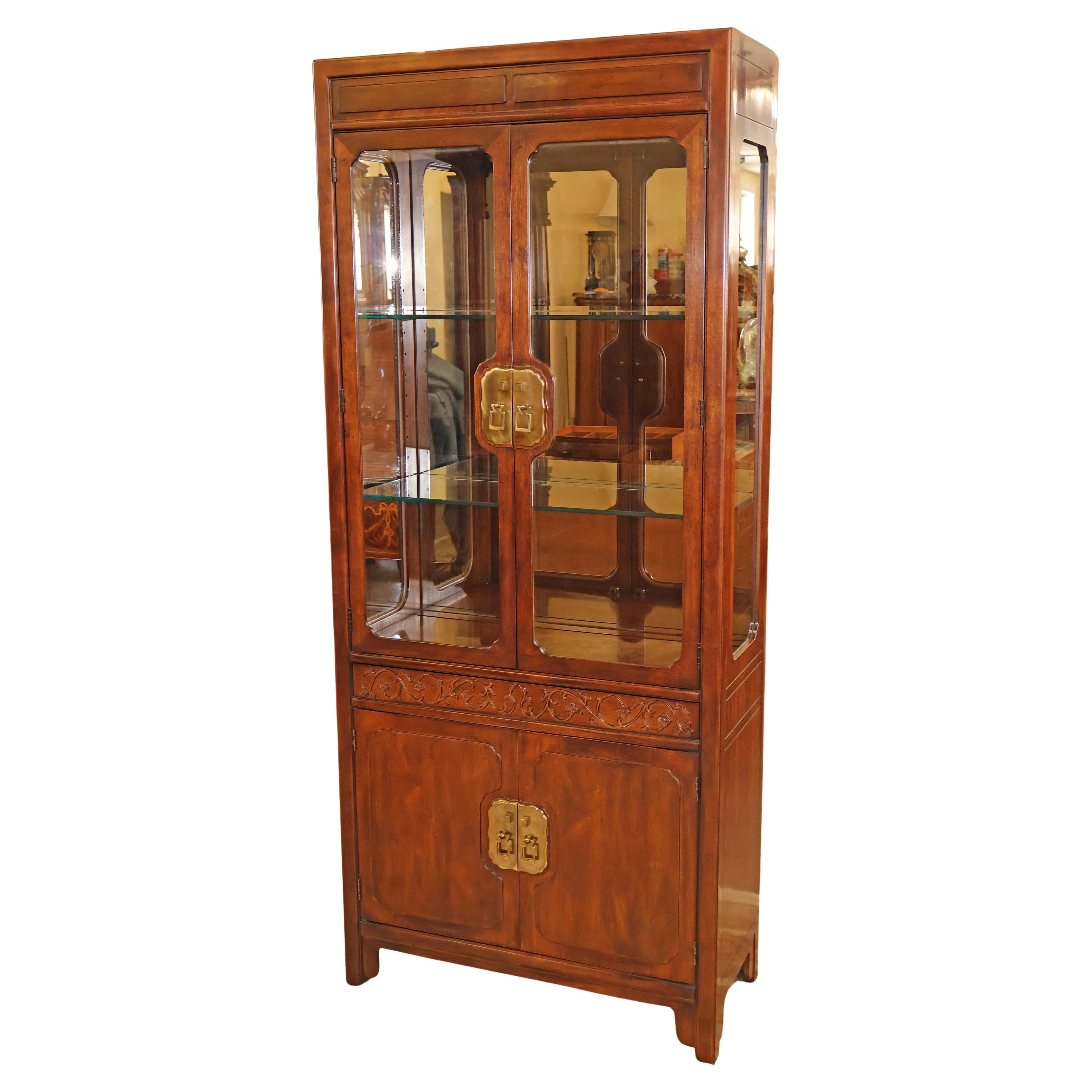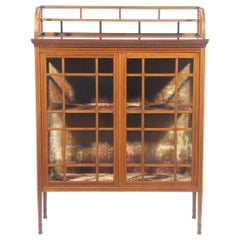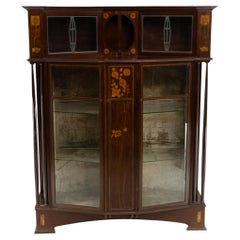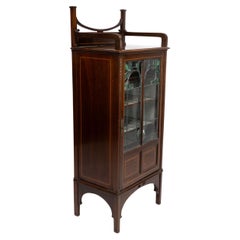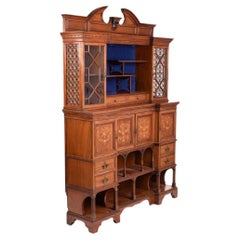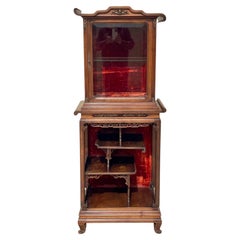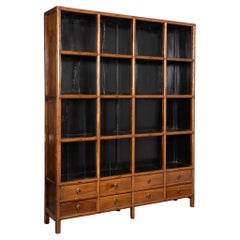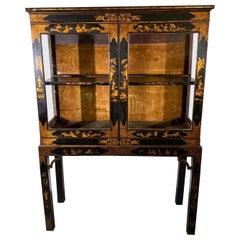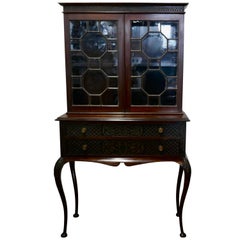Items Similar to Sir Robert Lorimer attr. Whytock & Reid Edinburgh Anglo-Chinese display cabinet
Want more images or videos?
Request additional images or videos from the seller
1 of 15
Sir Robert Lorimer attr. Whytock & Reid Edinburgh Anglo-Chinese display cabinet
$7,964.10
£5,800
€6,788.14
CA$10,987.04
A$12,077.78
CHF 6,347.53
MX$146,668.24
NOK 79,183.81
SEK 75,021.09
DKK 50,661.62
About the Item
Sir Robert Lorimer attributed, for Whytock and Reid Edinburgh. An Anglo-Chinese mahogany and burr walnut display cabinet with green painted and gilded wood.Literature: Savage, Peter, 'Lorimer and the Edinburgh Craft Designers', Steve Savage 1980, p. 89, plate 175.Lorimer had a close working relationship with Whytock & Reid in the latter part of the 19th century, and into the first quarter of the 20th century. This fine display cabinet is the Anglo-Chinese style, which Lorimer leaned towards in the latter part of his career such as Glencruitten House, near Oban, in 1927.Provenance: Kirkton House, Angus. Scotland.
- Attributed to:Whytock & Reid (Maker)Sir Robert Lorimer (Designer)
- Dimensions:Height: 54.73 in (139 cm)Width: 48.04 in (122 cm)Depth: 22.84 in (58 cm)
- Style:Anglo-Japanese (In the Style Of)
- Materials and Techniques:
- Place of Origin:
- Period:
- Date of Manufacture:1927
- Condition:Wear consistent with age and use.
- Seller Location:London, GB
- Reference Number:Seller: PV0045471stDibs: LU2243339687272
About the Seller
5.0
Platinum Seller
Premium sellers with a 4.7+ rating and 24-hour response times
Established in 1989
1stDibs seller since 2016
296 sales on 1stDibs
Typical response time: <1 hour
- ShippingRetrieving quote...Shipping from: London, United Kingdom
- Return Policy
Authenticity Guarantee
In the unlikely event there’s an issue with an item’s authenticity, contact us within 1 year for a full refund. DetailsMoney-Back Guarantee
If your item is not as described, is damaged in transit, or does not arrive, contact us within 7 days for a full refund. Details24-Hour Cancellation
You have a 24-hour grace period in which to reconsider your purchase, with no questions asked.Vetted Professional Sellers
Our world-class sellers must adhere to strict standards for service and quality, maintaining the integrity of our listings.Price-Match Guarantee
If you find that a seller listed the same item for a lower price elsewhere, we’ll match it.Trusted Global Delivery
Our best-in-class carrier network provides specialized shipping options worldwide, including custom delivery.More From This Seller
View AllE W Godwin, Collinson & Lock, an Anglo Japanese Mahogany and Satinwood Cabinet
By Edward William Godwin, Collinson & Lock
Located in London, GB
Edward William Godwin. Made by Collinson & Lock.
A fine quality Anglo Japanese mahogany and astragal glazed cabinet with satinwood line inlay.
...
Category
Antique 1870s English Anglo-Japanese Cabinets
Materials
Mahogany, Satinwood
E. Goodall Manchester An English Arts & Crafts Display Cabinet with Floral Inlay
Located in London, GB
E. Goodall of Manchester, a fruit wood, inlaid, and leaded glass display cabinet with an array of Glasgow Rose and floral fruitwood inlays.
...
Category
Early 20th Century English Arts and Crafts Cabinets
Materials
Fruitwood
A Petite Arts & Crafts Mahogany Display Cabinet in the Anglo-Japanese Style.
Located in London, GB
A petite Arts and Crafts mahogany display cabinet in the Anglo-Japanese style with chequer string inlays and carved fern details to the upper sides with stained and coloured leaded f...
Category
Early 20th Century English Arts and Crafts Cabinets
Materials
Stained Glass, Ebony, Mahogany
Collinson and Lock attributed. A rare Anglo-Japanese inverted mahogany sideboard
By Collinson & Lock
Located in London, GB
An Anglo-Japanese inverted mahogany sideboard, the arched open cornice with a small central carved display bracket to the centre, and an upper display shelf, a dentil cornice below w...
Category
Antique 1880s English Anglo-Japanese Sideboards
Materials
Walnut
Collinson & Lock. Aesthetic Movement Anglo-Japanese Glazed Walnut Side Cabinet
By Collinson & Lock
Located in London, GB
Collinson & Lock.
An outstanding quality Aesthetic Movement Anglo-Japanese walnut side cabinet with dentil moulding to the cornice and astr...
Category
Antique Late 19th Century English Aesthetic Movement Cabinets
Materials
Walnut
Waring and Gillows, an Exceptional, Bow Fronted Inlaid Display Cabinet
By Waring & Gillow
Located in London, GB
An outstanding Arts & Crafts display cabinet, with stylized ebony and pewter inlays. Arched bevelled mirror to the back above display area, flanked by two upper shelves stylized inla...
Category
Antique 1890s English Arts and Crafts Cabinets
Materials
Pewter
You May Also Like
Attr. to Gabriel Viardot - Japanese Vitrine / Cabinet
By Gabriel Viardot
Located in Beaune, FR
Lovely little Japanese-style vitrine in carved wood in the style of Gabriel VIARDOT. Vitrine in the upper part and shelves in the lower part. This small piece of furniture is in good...
Category
Antique 19th Century French Chinese Export Vitrines
Materials
Fruitwood
20th Century Chinese Elmwood Bookcase Open Display Cabinet
Located in Round Top, TX
Large elmwood display cabinet or bookcase with open shelving and eight lower drawers.
Interior shelf dimensions: 67.5"w x 13" deep to front edge x15.5"h. Black background.
Restored, ...
Category
Early 20th Century Chinese Chinese Export Bookcases
Materials
Elm, Paint
Late 19th Century Chinoiserie Display Cabinet
Located in Pomona, CA
Late 19th century English chinoiserie decorated display cabinet. The hinged top opens to reveal a remote document storage.
Category
Antique 1890s English Vitrines
Materials
Glass, Wood
Chinese Chippendale Astral Glazed Display Cabinet
Located in Godshill, Isle of Wight
Chinese Chippendale astral glazed display cabinet
This is a very attractive piece, it is made in mahogany, the cabinet has 2 astral glazed doors and i...
Category
Antique Mid-19th Century Chinese Chippendale Vitrines
Materials
Mahogany
Henredon Asian Style Folio 16 Display Case Curio China Cabinet
By Henredon
Located in Long Branch, NJ
Henredon Asian Style Folio 16 Display Case Curio China Cabinet
Dimensions : 84.25" Tall X 36" Wide X 16" Deep
This gorgeous cabinet was made by Henred...
Category
1990s American Anglo-Japanese Cabinets
Materials
Walnut
Antique Display Cabinet, China Buffet Storage Cabinet, Turned Wood Legs, Glass
Located in Rancho Cucamonga, CA
A stunning piece with beautiful wood grain and attention to detail.
This item was photographed in direct outdoor lighting, no restoration work has been done. Note- one of the legs ...
Category
Antique 19th Century Italian Neoclassical Revival Cabinets
Materials
Hardwood
More Ways To Browse
Anglo Chinese Furniture
Antique Furniture Edinburgh
Display Cabinet Japanese
Robert Lorimer
Lorimer Furniture
Japanese Display Case
Green Display Cabinet
Linke Vernis Martin
Oval Glass Cabinet
Antique Jewelry Display Cases
Italian Gold Vitrine
Maitland Smith Display
Plate Display Case
Vetrine Furniture
Antique Table Vitrine
Art Deco Shop Counter Display
Blue Vitrine
Hanging Vitrine
